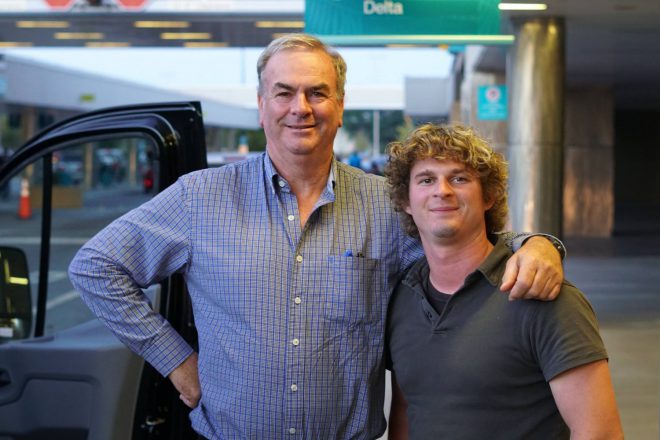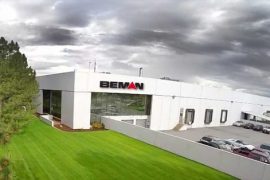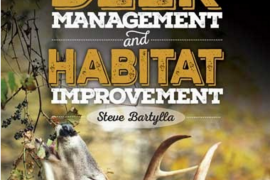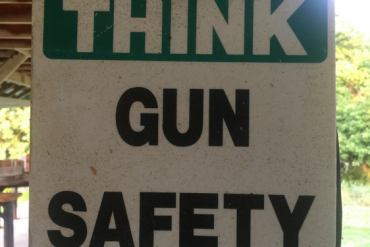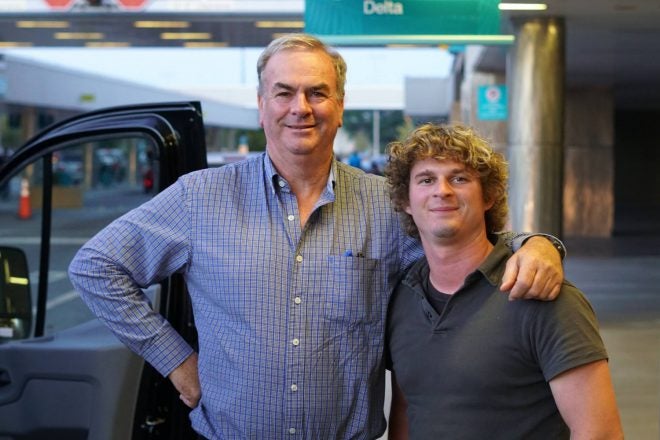
While at the Nightforce industry event back in November 2016, TFB received the privilege of talking one on one with Ray Dennis, the Australian dentist who founded one of the premier optics companies of our time.
The Firearm Blog- Before we get into the history of Nightforce Optics, could you talk about your background beforehand?
Raymond Dennis- I’m from Southern Australia and was born in 1954. My parents were immigrants from Germany after World War Two. At a very early age I learned to sit on the back of my grandfather’s motorbike while he went rabbit hunting. In Australia it was then still a free country, where you could go hunting, go shooting, and no one really frowned upon you if you had a rifle on your back while riding on a motorbike through a city to get into the hills to shoot rabbits. So from about five and a half years of age onwards I was a self-professed rabbit hunter, learning from my grandfather. That was really where my love of the outdoors and hunting started. Traditionally in Australia most hunting occurs at nighttime. This is because many animals there are nocturnal due to the high heat of the day. Foxes are predominantly nocturnal, kangaroos are as well, in areas that have a high populace. So the only way to control feral animals or just to hunt game is at nighttime with a spotlight. It is very different from the United States, wherein the majority of hunting takes place during the day and night hunting is frowned upon, if not illegal in many states. Except now it is opening up more and more for predator hunting. But in Australia it was quite a legal pursuit. Anyways, grandfather made up a little 6 Volt light with a motorcycle battery where you could jump the terminals to get the higher voltage as the bulb warmed up. It was mounted underneath the rifle barrel, and that was his nighttime spotting rig while he walked through the hills shooting rabbits. That was my introduction at a very early age, until I was old enough to do my own hunting. Rabbit and fox shooting every weekend was the name of the game. It developed I suppose, until I got to my mid-teens when I built up my first centerfire rifle which I got when I was 16, a .22-250 Ackley Improved in a Sako action, Shilen barrel, Unertl Scope and a thumbhole stock. That was my foxing and rabbiting cannon as I called it. It was a custom built rifle, and I thought I was a king with that. Because with foxes I could shoot them well out to 300 yards those days. Later on, I learned that I could make money out of selling the pelts, but I was overkilling the foxes with huge exit wounds that could destroy the pelt. Before 7mm Rem became popular, I had to custom build build 7mm .222 Improved which I used for harvesting fox pelts along with minimal skin damage. But then I gravitated towards night hunting and I needed a really good light. Because with the newer cartridge I only had about a 5 inch drop at 300 yards, so I had a very flat shooting round. But at night time the problem was seeing what I was trying to shoot. Most of the spotlights would go out to 100, 150 yards but didn’t have the power to push further.

RD- Yes, they were injection molded plastic, seven inch reflectors, 100 Watt Halogen bulb, but it was a projector bulb. Rather than a traditional automotive bulb. The projector bulb gave it far better color rendition, and having much tighter focus through a smaller filament. Therefore by focusing the light by movement of the bulb relative to the reflector you could really get a pinpoint beam. That could get you the ability to get target acquisition well over 400 yards away. They were very lightweight and had incredible performance at a relatively economical price. You could hold it all night and not have wrist fatigue. Brilliant power that, but now I could see what I was trying to shoot, I had a rifle that could do what I wanted it to, but I didn’t have a scope that could utilize both of those functions. The problem with European optics was that the reticles were in the first focal plane, and were too thick. There was no parallax adjustment and there were very few models with high power magnification. Picket post or too heavy thickness of crosshairs were also an issue. The reason the Germans used that was because they were doing moonlit shooting at close ranges. But that doesn’t work on a fox’s head at 300 yards at nighttime where you can just see the two ears and the head above the wheat stubble. I quickly realized there was nothing out there that could really do it for me. The U.S. scopes in the late 70s and early 80s; Leopold, Barris, Redfield, had the disadvantage in that they all had fine reticles, small objective lens, didn’t have the light gathering power. You’d lose the reticle at night time unless you had perfect focus, and for all the reasons that we know now, it wasn’t a suitable candidate for a night hunting scenario. That is what really pushed me to develop a type of scope that had unique features. Such as incorporating a 56mm objective lens with good light gathering power. Europeans had that of course, but they never combined it with the illumination, and they never combined it with parallax adjustment. At nighttime you have to have parallax adjustment because you have a lot of difficulty getting your reticle and your image both in image at the same time when you no longer have the receptors for color working to your advantage bringing the two together.
TFB- It was time for a change then?
RD- Well, I figured I had to do something about this so I went to the 1986 SHOT Show in New Orleans. I went there with my spotlight to see if I could market it in the U.S. and I successfully did so. More for the Marine market than the hunting market because of the illegality issue. But I found a manufacturer that could make me a scope from Japan, that encapsulated all those features. A 30mm tube, illuminated reticle, second focal plane because I didn’t want the reticle to “grow” and obliterate the fox head at 300 yards. And I wanted parallax adjustment with a large objective lens. For a little bit of arm wrestling I got them to make up a batch of 500. That was for Australia, for fox hunting on .17 Remingtons, .222s. Back then fox skins were bringing in 20-30 dollars a pelt. Which in those days was really good money. And it worked very well. We sold everything we could get into the country and then I came up with a number of magnifications, up to 15 power. Eventually I decided to open up my own company in the U.S. and that was in Seattle at the time. We organized an office there, had two staff members working there. The main criteria I had was to sell the lights. I had no idea that people in the U.S., the land of optics, would be interested in my scopes. But we had it, as apart of what we made. And in no time at all, it was apparent that everyone in the U.S. was enamored by the optics and not really by the lights because it was illegal in most places and no one wanted to take the risk of getting caught. I was more focused on the lights, but they actually reversed roles entirely.
TFB- You established Lightforce in Australia first, and then in the United States, but it hadn’t turned into Nightforce yet?
RD- Correct. Both the lights and scopes had Lightforce imprinted on them in the U.S., until we received a letter from a person in California who was making light bars for emergency services and police forces, all those flashing lights on the top of emergency cars. The company was named Lightforce and I had no idea about that. They didn’t want me to use the name in the U.S. When I asked them if I could buy the rights to use the name, they said for $25,000 I could. That was a lot of money for a small business I was trying to start. So I said bugger that, I’ll change the name, I’ll call it Nightforce. So one letter change and away I went. Later on, the company from California went out of business, so we changed over the name for just our lights in the U.S. to Lightforce because that made sense with the light market around the world. But because the scopes had taken over so well, I determined that it should keep the Nightforce brand name.
TFB-Throughout the design and evolution of the different products, did you get into the details and mechanically design things, or were you more about the concept and what needed to be done?
RD- I’m not an optical engineer, I’m not a mechanical engineer, I’m a dentist. But what dentistry in those days did, is it gave us a very good overview and brushstroke education over a whole range of things. Obviously being interesting in things, you pick up the skill sets you know and you need to be able to innovate to do what you can’t do. As most successful people realize, they can only do so much themselves, they have to get the engineers to take over and put those ideas into reality. That is the innovation part of the concept. I was very innovative, I hand built my own lights back in the early days. But when it came to making an injection mold, I had to get a designer to do that, and a molding engineer. There is a separation there, in knowing what you want, but you haven’t got the skills to…

